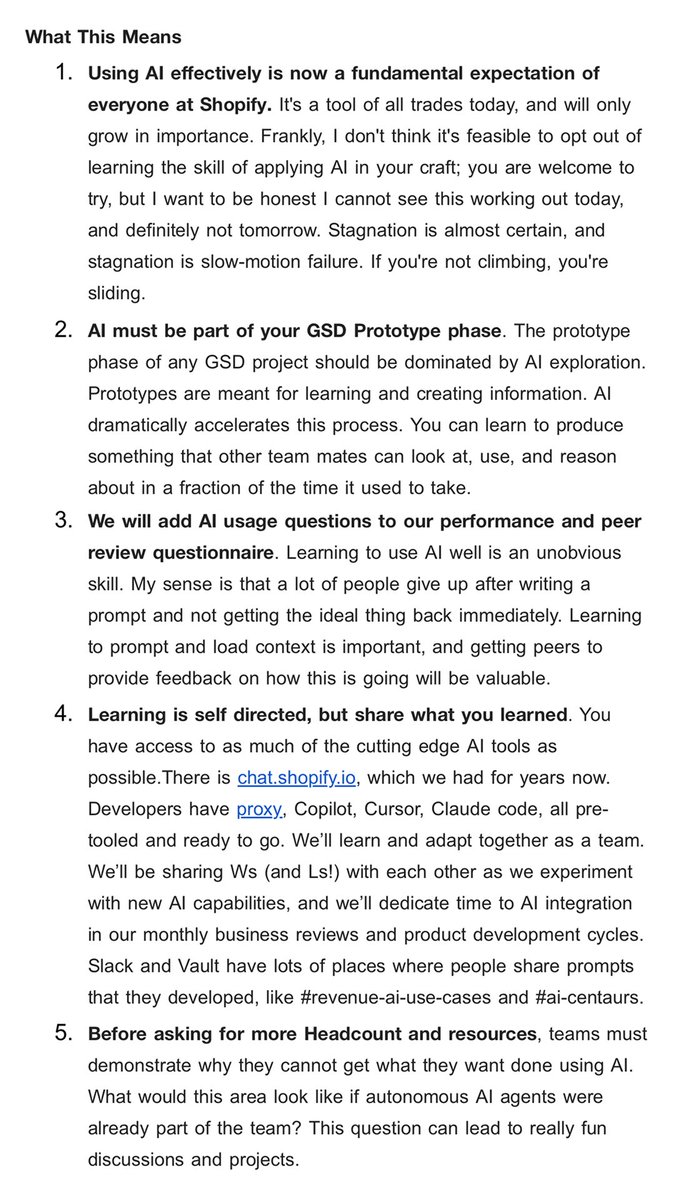AI adoption is a UX problem
We have plenty of intelligence. The problem is making it usable
Toby Lütke, CEO of Shopify, just made the rounds on Twitter with an internal memo that he sent to his company. In it, he basically tells all of his employees that the time to mass adopt AI in their business is now. No matter which job or role you’re in, you need to be using AI all the time, every day, or risk damaging your performance review. If you haven’t seen it, read it for yourself here:
This echoes what I’ve heard from other CEOs in and around tech — they recognize the usefulness and productivity gains on offer from AI tools like ChatGPT and Claude. But for some reason, that isn’t enough for their employees to actually adopt them at scale. They have to be threatened with bad reviews.
The AI tools that seem to spread by themselves within workforces are things like Cursor for interactive coding and Granola for automated note-taking. These tools are casually dismissed as “GPT wrappers” by some industry commentators — after all, ChatGPT (or Sonnet or Gemini or Llama or Deepseek) is doing all the “real work”, right?
People who take this perspective seem to be throwing away all the lessons we’ve learned about software distribution. It’s like they saw Instagram and waived it off as an “ImageMagick wrapper”… or Dropbox as an “rsync wrapper”.
Those products won because they made powerful, highly technical tools accessible through thoughtful design. The biggest barrier to mass AI adoption is not capability or intelligence; we have those in spades. It’s UX.
This is an excerpt from Nan Yu's AI adoption is a UX problem article. I highly recommend you give it a read!
